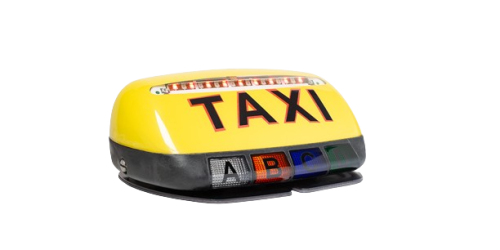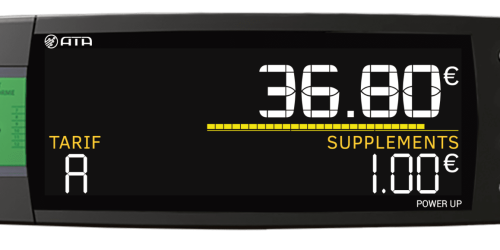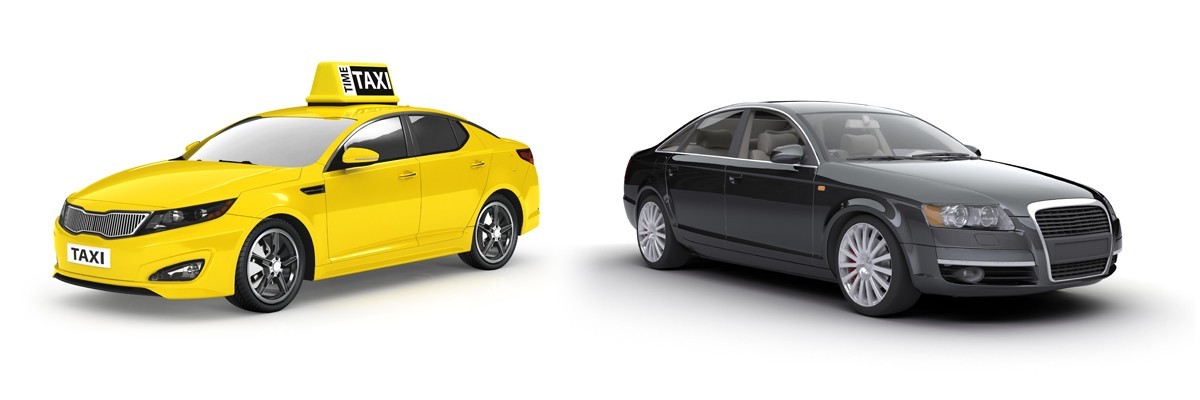Taxi fares and rates in Alsace and Strasbourg
Taxi fares:
Discover the regulated taxi fares in Strasbourg, as defined by an annual prefectural decree. The city and the Bas-Rhin department offer a clear fare structure, with four distinct categories:
A: Daytime trips with a return journey in service start with a base fare of €3.00, accompanied by a rate of €0.97 per kilometer traveled.
B: For nighttime, Sundays, and holidays with a return journey in service, the base fare remains the same at €3.00, but the cost per kilometer increases to €1.38.
C: Daytime trips with an empty return require a base fare of €3.00, with a slightly higher kilometric rate of €1.94.
D: However, for nighttime, Sundays, and holidays with an empty return, the base fare remains at €3.00, but the cost per kilometer traveled is significantly higher, reaching €2.76.
Taxi fares, additional charges:
Additionally, it is important to note that for each additional passenger from the fifth person onward, a supplement of €4.00 is applied. As for extra luggage beyond the third bag, a fee of €2.00 per additional bag is added.
It is worth noting that nighttime rates are applicable from 7:00 p.m. to 7:00 a.m. Nighttime hours remain consistent throughout the year. Finally, the minimum fare, including supplements, is set at €8.00.
VTC fares in Strasbourg and Alsace
Taxi and VTC Rates:
The main difference between taxis and VTC lies in the pricing freedom of VTCs, which may give the impression that they are more expensive. However, it’s important to note that VTCs often offer competitive and transparent rates, without surcharges for nighttime or holidays. Additionally, VTC transfer prices are fixed in advance and cannot be altered, ensuring peace of mind for clients even in case of traffic disruptions. This transparency and price consistency are significant advantages of VTC services compared to traditional taxis. To estimate a fare for your VTC journey, click here.
Mandatory Equipment for Taxis
In accordance with taxi regulations, a set of equipment is mandated to ensure quality service. Every operating taxi must be equipped with a taximeter, also known as a meter. This electronic device records the distance traveled and calculates the fare based on regulated rates.
Additionally, a printer is necessarily linked to the taximeter. This equipment enables the issuance of a detailed receipt at the end of each trip, ensuring traceability.
With technological advancements, the presence of a credit card payment terminal is now a standard requirement for taxis. This device provides passengers with the option to securely and conveniently pay for their ride.
To ensure clear and immediate identification of the vehicle in service, a luminous device on the exterior of the taxi is indispensable. This device clearly displays the word “Taxi”, allowing pedestrians to easily distinguish taxis from other transportation vehicles.
In summary, to be legal, every taxi must have a taximeter, a printer, a credit card payment terminal, and a luminous “Taxi” device. These equipment items ensure a safe, transparent, and regulatory-compliant experience.


Mandatory Equipment for VTCs
VTCs must display a mandatory red adhesive sticker. There is no requirement for a payment terminal or luminous device. However, vehicles must meet strict quality criteria. They must be a maximum of six years old, have four doors, and adhere to certain dimensions. Additionally, an annual technical inspection is required. These requirements imply that VTCs, in general, are luxurious and well-maintained vehicles, ensuring quality service for passengers.
At ARM VTC, all vehicles are equipped with payment terminals, Wi-Fi, chargers for electronic devices, and even offer additional amenities such as bottled water, newspapers, etc. These extras aim to enhance the passenger experience and provide a premium service. Thus, while these equipment items are not mandatory according to regulations, they are often present.

